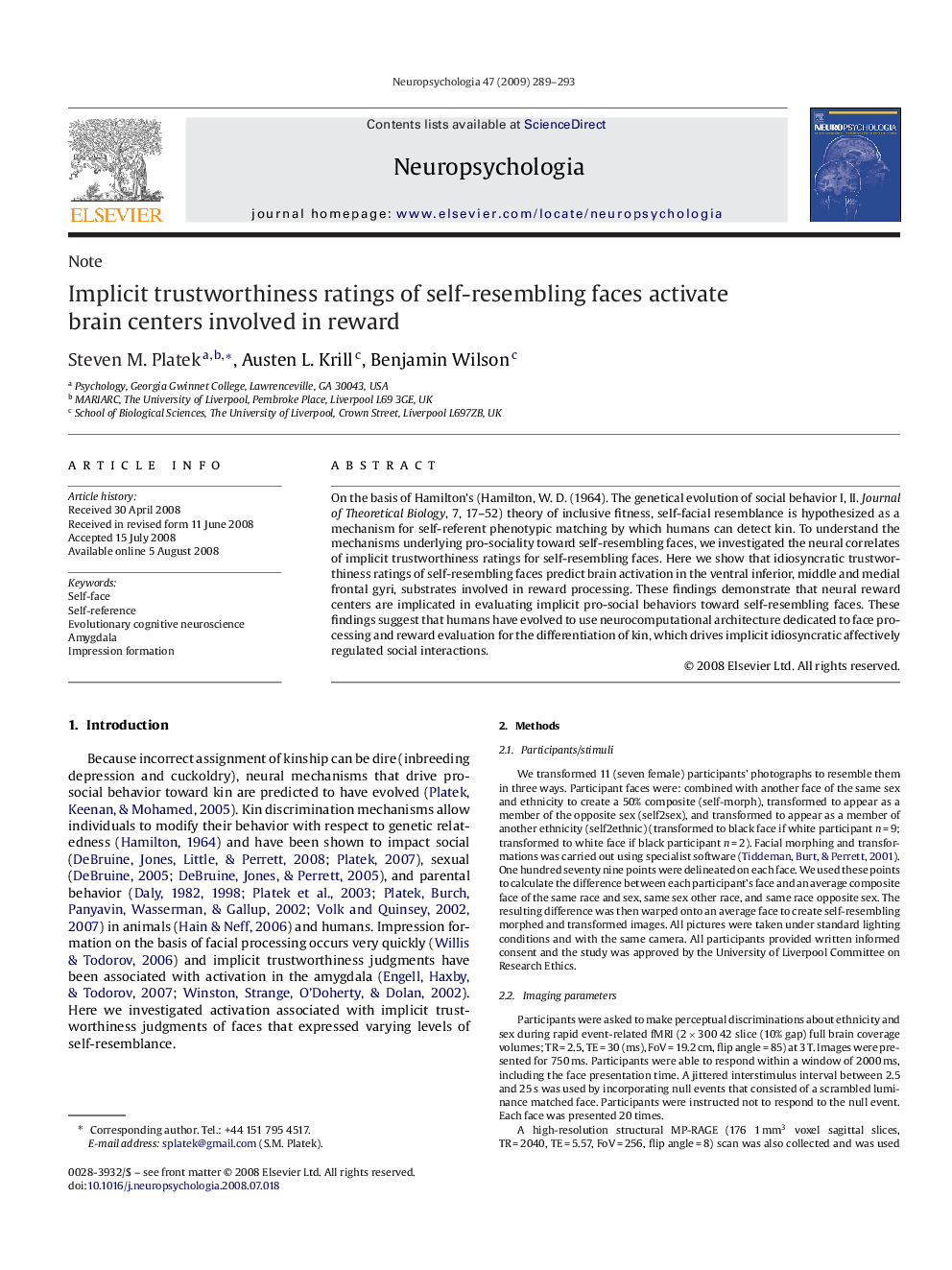| Article ID | Journal | Published Year | Pages | File Type |
|---|---|---|---|---|
| 945225 | Neuropsychologia | 2009 | 5 Pages |
On the basis of Hamilton’s (Hamilton, W. D. (1964). The genetical evolution of social behavior I, II. Journal of Theoretical Biology, 7, 17–52) theory of inclusive fitness, self-facial resemblance is hypothesized as a mechanism for self-referent phenotypic matching by which humans can detect kin. To understand the mechanisms underlying pro-sociality toward self-resembling faces, we investigated the neural correlates of implicit trustworthiness ratings for self-resembling faces. Here we show that idiosyncratic trustworthiness ratings of self-resembling faces predict brain activation in the ventral inferior, middle and medial frontal gyri, substrates involved in reward processing. These findings demonstrate that neural reward centers are implicated in evaluating implicit pro-social behaviors toward self-resembling faces. These findings suggest that humans have evolved to use neurocomputational architecture dedicated to face processing and reward evaluation for the differentiation of kin, which drives implicit idiosyncratic affectively regulated social interactions.
